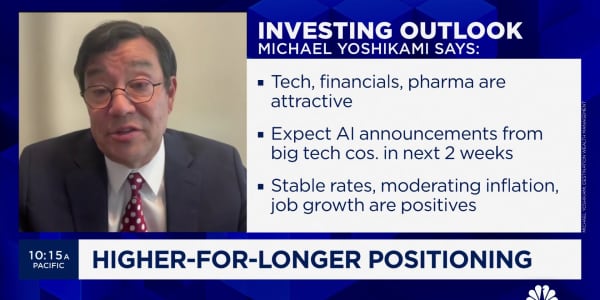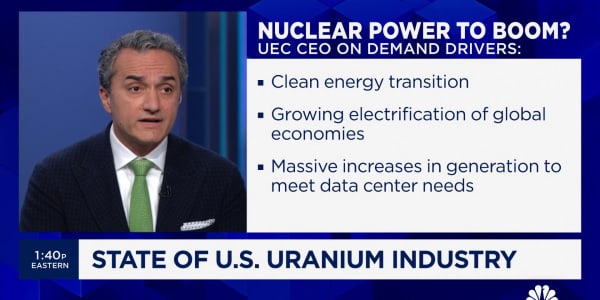One of the largest hedge funds in the world, BlueCrest Capital Management's BlueTrend, is trying to put its worst year ever behind it with positive returns, but it still faces challenges convincing investors to stay.
BlueTrend is up 3.34 percent net of fees this year through May, according to a person familiar with the returns. The fund swung to a gain after rising 6.32 percent last month by correctly predicting bond and stock price movements. That's already far better than the fund's poor performance in 2013 when it lost 11.5 percent—its first negative calendar year since launching a decade ago.
The problem is that many investors have decided to yank money from the so-called "trend following" strategy, also known as managed futures or commodity trading advisors. Such funds use computer models to predict trends in the prices of stocks, bonds, currency, commodities and other markets, betting that valuations tend to revert to a mean following swings up or down.
BlueTrend's assets have fallen nearly $7 billion over the last year, to $9.3 billion as of May 1, 2014, down from $16 billion as of May 31, 2013, according to BlueCrest marketing materials. About $3.7 billion of the decline represents actual investor redemptions, according to a person with knowledge of the situation.
A spokesman for Europe-based BlueCrest, which manages $30 billion overall and is led by Michael Platt, declined to comment.
BlueTrend is managed by one of the most powerful women in the hedge fund industry, Leda Braga. The fund's assets surged after 2008, when she produced a stellar 43 percent gain. Despite losses in 2013, BlueTrend has produced average annual returns of 10.7 percent since its inception in April 2004.

BlueTrend isn't the only fund suffering. Money in managed futures funds have declined about 3.5 percent since the start of 2013 to $325.3 billion as of March 31, 2014, according to data tracker BarclayHedge. That's as overall hedge fund industry assets have surged, but more to other strategies such as stock picking and corporate activism.
Read MoreWho's ruling the hedge world? You'll never guess
"It's been a pretty difficult environment for CTA funds over the past several years, quite honestly, and last year certainly wasn't easy," said Eric Siegel, head of hedge fund research and management at Citi Private Bank.
Siegel highlighted two broad reasons for managed futures hedge funds' poor performance.
First is the continued intervention of central banks in the economy. The flood of money into the financial system has made the prices of many types of securities relatively stable. That hurts trend followers, who tend to gain more in volatile markets (the Newedge Trend Index, which tracks funds in the sector, gained 20.88 percent in 2008 when the markets crashed, for example).
Second is the continued low rate of return on cash because of interest rates near zero. Managed futures funds tend to have lots of cash on their books relative to other strategies because the futures contracts they invest with don't require that the full amount of the bet be paid upfront.
"It's a double whammy from central banks' accommodative stance," Siegel said. "That's really been the issue."
That challenging environment has caused continued poor performance at many funds. The Newedge CTA Index is up just 0.13 percent this year through May after a tepid 0.73 percent return in 2013. The similar Newedge Trend Index is down 1.96 percent so far in 2014 after a small 2.67 percent gain 2013. Both indexes lost money in 2011 and 2012.
Prominent managed futures firms have produced mixed returns so far in 2014, representative of their varied computer models.
How top managed futures funds performed
| Fund | Assets ($B) | 2013 return | 2014 YTD return | 2014 date |
|---|---|---|---|---|
| Two Sigma Compass Cayman Fund | 5000 | 14.07% | 12.60% | 31-May |
| Man AHL Diversified | 9000 (all AHL) | -3.10% | 5.50% | 31-May |
| Renaissance Institutional Futures Fund | 1460 | 2.15% | 4.89% | 23-May |
| BlueCrest BlueTrend | 9300 | -11.50% | 3.34% | 31-May |
| Winton Futures Fund | 10400 | 9.40% | 1.75% | 1-Jun |
| Newedge CTA Index | Benchmark | 0.73% | 0.13% | 31-May |
| Newedge Trend Index | Benchmark | 2.67% | -1.96% | 31-May |
| Graham Global Investment Fund | 7300 (firm) | 10.59% | -2.98% | 31-May |
| Campbell Global Assets | 3000 | 12.58% | -7.50% | 30-May |
Source: Source: Hedge fund databases, CNBC.com reporting
Read More
Performance has picked up recently this year—most funds made money in April and May—and investors may be rethinking their negative views on the strategy.
James Skeggs, global head of Newedge's advisory group—owned by Société Générale—said his unit has received more calls from clients in recent weeks about managed futures funds. He attributes the interest to a forward-looking view that central bank market intervention will ease, providing a better environment for the strategy.
"People are looking at it and going 'well, maybe going forward there is going to be more market movement, and strategies that are designed to capture that—that's maybe where we want to be,'" Skeggs said.
To be sure, central banks are not uniformily stepping back. On Thursday, for example, the European Central Bank imposed a negative interest rate on banks for their deposits and cut two other key rates.
Read MoreDraghi breaks new ground with negative interest rate
—By CNBC's Lawrence Delevingne






